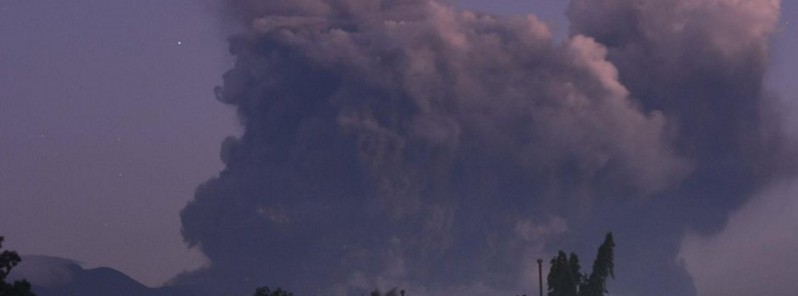Kanlaon erupts sending ash up to 1.5 km above crater, central Philippines

An ash eruption occurred from the active crater of Kanlaon volcano, the Philippines around 10:20 UTC on March 29, 2016. Based on seismic records the eruption lasted around 12 minutes. The volcano last erupted on December 27, 2015.
PHIVOLCS reported the event was accompanied by a booming sound heard in Sitio Guintubdan, Brgy. Ara-al and Brgy. Yubo, La Carlota City, Negros Occidental and Brgy. Pula Canlaon City, Negros Oriental.
From the southeastern side of the volcano, the eruption plume was observed to have reached 1 500 m (4 921 feet) above the active crater. Traces of light ashfall were reported in Sitio Guintubdan, Brgy. Ara-al, La Carlota City, Negros Occidental.
Mt. Kanlaon as seen from CPAC, Murcia, Negros Occidental earlier tonight. https://t.co/yw31XXu6hq pic.twitter.com/eaiNwXbaf2
— Del Bandiola (@jgge214) March 29, 2016
Ash fall due to #Kanlaon reaches he upper barangays of Bago City. pic.twitter.com/bF9Z4cwbvj
— ace alvarez balboa (@ace2york) March 29, 2016
Kanlaon remains at Alert Level 1, which means that it is at an abnormal condition and is in a period of current unrest.
The local government units and the public are reminded that entry into the 4-km (2.5 miles) radius Permanent Danger Zone (PDZ) is strictly prohibited due to the further possibilities of sudden and hazardous steam-driven or phreatic eruptions, PHIVOLCS said.
Civil aviation authorities must also advise pilots to avoid flying close to the volcano’s summit as airborne ash from a sudden eruption can be hazardous to aircraft.
The #Kanlaon Volcano in Negros Oriental province erupted at 6:20 p.m. on Tuesday https://t.co/vux4oqQ7qN
— CNN Philippines (@cnnphilippines) March 29, 2016
Geological summary
Kanlaon volcano (also spelled Canlaon), the most active of the central Philippines, forms the highest point on the island of Negros. The massive 2435-m-high andesitic stratovolcano is dotted with fissure-controlled pyroclastic cones and craters, many of which are filled by lakes. The largest debris avalanche known in the Philippines traveled 33 km to the SW from Kanlaon.
The summit of Kanlaon contains a 2-km-wide, elongated northern caldera with a crater lake and a smaller, but higher, historically active vent, Lugud crater, to the south. Historical eruptions from Kanlaon, recorded since 1866, have typically consisted of phreatic explosions of small-to-moderate size that produce minor ashfalls near the volcano. (GVP)
Featured image: Kanlaon eruption on March 29, 2016. Credit: Arvin Ian

Commenting rules and guidelines
We value the thoughts and opinions of our readers and welcome healthy discussions on our website. In order to maintain a respectful and positive community, we ask that all commenters follow these rules.